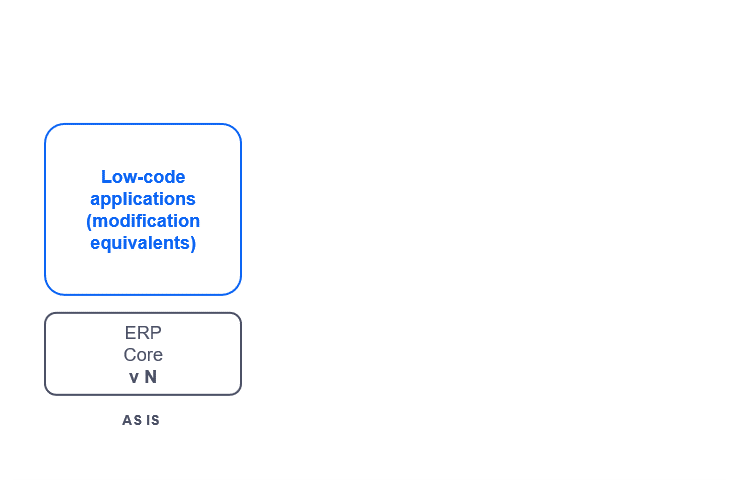
Challenges related to ERP systems
In Novacura we have 15+ years of experience in implementing and extending various ERP systems. We observe that no matter which ERP system the company uses, there are the same common problems about them. Below we summarize the challenges related to ERP systems that our customers must face.
Complexity for users
ERP systems are advanced and cover dozens of modules that offer hundreds of capabilities. But in parallel, they also offer complexity. A large number of offered functions gives users the flexibility of use, but on the other hand, it doesn’t guide users and doesn’t help them follow the one and right path to accomplish their tasks. So sometimes simple-looking tasks (like the creation of a new customer in the system) might require several subordinate operations performed by the user before he is finally able to accomplish the task. And the user must be aware of these subordinate operations, otherwise, he will not be able to finalize his work.
Limited Integration capabilities
Complexity is not the only dark side of ERP systems. These systems are mainly designed as central points in the IT-systems landscape. The other systems should be integrated with ERP systems if they want to communicate. Also, ERP systems usually don’t provide ready-to-use connectors to 3rd party systems. Instead of that, they simply offer API and other systems should take care of the integration. Consequently, it is not easy to connect an ERP system with a new 3rd party system – customers can’t simply choose the right connector offered by ERP system on some marketplace, establish a connection and … start using it.
Limited customization
The other problem with ERP systems is, that in the same version they are addressed to multiple companies that operate in different industries. Even if they offer a large set of configuration parameters, they can’t be perfectly adjusted to specific company needs. This means, there is a gap between real processes that exist in a company and fragments of processes supported by ERP. Because of that, employees establish workarounds and start working outside of ERP systems by using Excel sheets, emails and paper documents.
Expensive modifications
To solve the problem with relatively limited customizations, ERP vendors allow customers to create ERP modifications. But modifications always cause a lot of problems – they are not separated from ERP core, so the whole ERP architecture gets complicated – it is hard to identify all modifications and keep evidence of them. This is especially important when upgrading the ERP system. At that moment, all modified fragments of the old ERP version should be identified, documented and most usually re-written in the new ERP version.
Mobility
ERP systems are mostly designed as a large system for people who work in the office (including managers). Modern ERP systems (like IFS Cloud) offer user interfaces that are designed to work well on mobile devices like smartphones and tablets. In practice, not all features are available that way. For instance, applications for mobile technicians, or people who operate in a warehouse or on a shop floor are usually not mature and offer very limited functionality. And they are designed in a similar way to the main ERP user interface – they are complicated.
No process-oriented thinking
ERP systems were initially designed to manage corporate resources. Different users can access different data / registers / assets / transactions. They can read it, modify, add and delete. But these operations are not a part of a wider business process. The process is handled in the real world – when people get a new task, they know how to process it in an ERP system, and then they know who to inform about it. So, the next person (informed by email/call) can start his own task. But ERP system doesn’t guide all users over the business process.
Solution: a low-code and integration platform connected to ERP system
In Novacura, we observe the above challenges for many years. Therefore, 15 years ago we decided to create our low-code platform Novacura Flow, which helps companies solve all problems listed above. But this is not just another low-code platform – Novacura Flow is a low-code platform dedicated to extending ERP systems. This means – it offers out of the box:
- Deep ERP integration philosophy
- Mobility
- Zero ERP modifications strategy support
- Integration platform capabilities
- Business process management (BPM) capabilities
What is a low-code platform?
A low-code development platform provides a visual interface, simple logic, and drag-and-drop features that allow users – even with no formal coding or software development knowledge – to create applications and build business processes themselves.
In a low-code platform, users can draw applications without formal code training. The general logic makes it easy for both the application creator and other business users within the organization to understand.
An example of an application designer in the low-code platform + final application look
What does Deep ERP integration mean?
Deep ERP integration means, that the low-code platform is very tightly connected with the ERP system. It is not a kind of integration when data is exchanged at the end of some long process. With deep integration in place, every change to business objects or transactions in low-code should also be applied to objects and transactions stored within an ERP, according to the rules defined by that ERP (via the API). All changes should be immediately visible within the ERP, even when using other ERP modules.
Deep ERP integration strategy
A deep integration strategy is supported only when a low-code platform offers a dedicated ERP connector, that has access to all the APIs offered by that ERP. Therefore, the low-code application should continuously operate on data from the ERP.
Benefits of using a low-code platform connected to an ERP system
- No boundaries in customization – if you store changes in a low-code platform, you are no longer constrained by the customization rules defined by the ERP system. You can do ANYTHING.
- 0-ERP modifications strategy – a low-code platform that supports Deep ERP integration can be used to implement a “zero ERP modifications strategy”. It means, all necessary modifications that are usually done by modifying ERP systems directly, are done separately from ERP, in the low-code platform. That way all low-code modification-equivalents (low-code apps) are well identified, maintained in one place and don’t complicate ERP architecture. This is especially important when upgrading ERP system. Instead of re-writing old modifications in the new ERP version, low-code platform applications are re-connected to the new ERP version. Read more about it here.

- Mobility – modern low-code platforms offer a mobile interface, so people using smartphones/tablets can access all applications and data created in the low-code platform. More advanced low-code platforms (like Novacura Flow) offer dedicated mobile applications that can be installed on users’ devices. This approach allows low-code applications to use all resources offered by mobile devices like cameras, mobile printing, accessing other IoT devices via Bluetooth BLE, or accessing files stored on the device. And such applications might be run in an offline mode, which is especially important for crew working in the exterior (like technicians).
- Easy user interface – for regular users that need high efficiency in massive daily operations (like warehousemen, or work center operators on the shop floor), you can create dedicated and optimized applications that will guide them step-by-step. It means, operations will be exactly adjusted to the optimal working path and will help increase efficiency. Moreover – the same way of working will be applied by any new employees without teaching them – simply because the application will not allow them to run the other path!
- Process Layer – some low-code platforms allow you to achieve a business process management (BPM) layer for your ERP. As a result, modifications and applications can be prepared for particular users, replacing standard forms. You can also connect users across departments to enable collaboration. Master data editing can also be accomplished by having multiple users involved in the data change acceptance process. You can read more about “How to implement a BPM layer for your ERP.”
- Integration capabilities – low-code platforms can act as an integration platform to connect your ERP system with data from your other business systems. Low-code platform providers often provide pre-defined connectors to make IT architecture cleaner and technical integrations easier. Read more about connectors available for Novacura FLOW.
- Technology bridge – advanced low-code platforms (like Novacura FLOW) can be a bridge to the latest technologies – such as Artificial Intelligence (AI), Internet of things (IoT), and Augmented Reality (AR). These extensions can dramatically boost the value of your ERP system and improve overall work efficiency.
- Citizen development – low-code platforms enable companies to implement one of the freshest IT strategies called citizen development. In this strategy, average citizens learn to build applications without code or software developer expertise. Thus, enabling business users to be more involved in the creation of applications.
get a free demo:

Aksel Jarlbäck
Solution Expert
Please fill out the form
Summary
A low-code platform is an alternative to improve your BPM and make sure your ERP works with your business processes. This means that it can fill the gap between ERP systems and the actual business processes in a company.
With a low-code platform, you can connect your people, processes and technology exactly as you want to. Modifications can be kept separate from the ERP, which gives the possibility to re-connect instead of re-write modifications when upgrading your ERP.
To improve your BPM, a low-code platform is a good alternative also to avoid workarounds such as excel sheets, emails and paper documents. The simple logic of low-code allows users, not only those with coding experience, to create and manage and build their business processes themselves.





